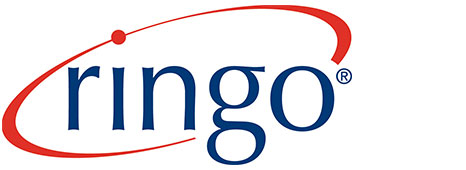Winning the War for Talent: Bridging HR and Procurement

A cost-efficient, highly skilled workforce is the foundation of successful healthcare operations. However, achieving this balance requires more than just effective hiring—it demands seamless collaboration between supply chain management (SCM) and human resources (HR). Traditionally siloed, these departments must align their goals to attract and retain top-tier talent while maintaining cost control.
One proven solution is leveraging a Managed Service Program (MSP) and a Vendor Management System (VMS) to centralize workforce operations. Ringo offers a vendor-neutral, best-in-class platform that integrates the needs of both SCM and HR, providing total visibility into contingent labor spend while optimizing workforce efficiency—all with zero start-up cost.
Workforce Challenges: The Need for Strategic Hiring
Today's job market presents significant challenges for healthcare organizations:
- 77% of Gen Zs and 75% of Millennials would consider leaving a job if required to work on-site full-time. (Deloitte)
- 3 out of 4 employees workers say they are open to other opportunities. (TopResume)
- The total cost to hire a new employee can be 3-4 times their salary due to training and onboarding costs. (Society for Human Resource Management)
With low unemployment rates, employees now hold more bargaining power, making it critical for organizations to optimize hiring and workforce retention strategies.
Aligning SCM and HR for Smarter Workforce Decisions
To build a workforce that’s both effective and cost-efficient, HR and procurement must move beyond their traditional silos and collaborate. Here's how their roles align:
- Procurement: Focuses on cost control, risk management, and vendor oversight.
- HR: Prioritizes talent acquisition, cultural fit, and workforce engagement.
While these objectives may seem at odds, they’re complementary when approached strategically. Misalignment between the two can result in inefficiencies, increased turnover, and inflated hiring costs. Ringo bridges this gap, providing a unified, data-driven platform that ensures both departments work toward shared goals.
The Ringo Advantage: Bridging the Gap
Ringo bridges the divide between HR and SCM by offering a unified platform that satisfies both departments' needs. By integrating real-time analytics, automation, and compliance tools, Ringo empowers organizations to:
- Reduce Costs: Gain full visibility into labor spend, track expenses, and optimize vendor management.
- Improve Hiring Efficiency: Automate processes to reduce time-to-fill and ensure faster placements.
- Enhance Workforce Retention: Offer seamless onboarding, compliance tracking, and workforce engagement strategies.
- Ensure Compliance & Risk Management: Stay ahead of regulatory changes, credentialing updates, and licensing requirements.
- Streamline Processes: Automate workflows, integrate HR and procurement data, and eliminate inefficiencies.
Why Choose Ringo?
Ringo isn’t just another tech tool—it’s a strategic partner designed to future-proof your workforce. Key benefits include:
- Real-Time Analytics: Gain access to customized reporting for data-driven decision-making.
- Quick Implementation: Ensure minimal disruption during onboarding.
- Flexible Workflows: Organize staffing operations by vendor, department, or time frame.
- Integrated Compliance Management: Stay ahead of regulations and reduce risk.
- Seamless System Integration: Connect with existing HRMS and ERP systems for smooth functionality.
Future-Proof Your Workforce
As workforce dynamics evolve, organizations must embrace cutting-edge workforce management technology to remain competitive. Ringo ensures long-term sustainability by providing cost control, improved hiring strategies, and compliance oversight—all in one platform.
Ready to transform the way you manage your workforce? Contact Ringo today to see how we can help your organization thrive in an ever-changing job market.



